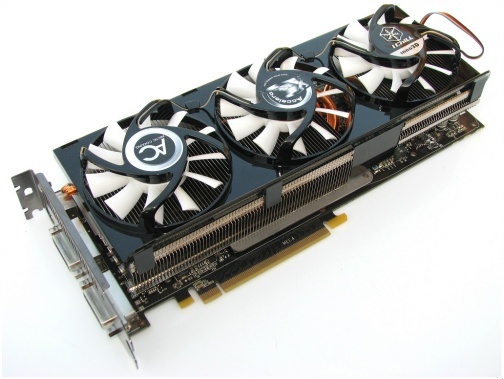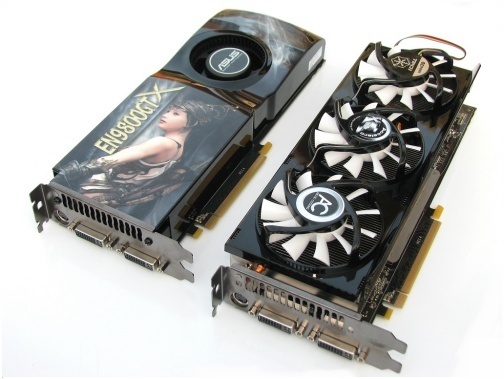The Card
Without a doubt the key feature of the iChiLL 9800 GTX Accelero Xtreme is the Arctic Cooling cooler sitting on top of it. This massive cooler proved to be one of the best, if not the best air-based solution for GeForce 8800 GTX cards. It was also modified for the Radeon HD 2900XT with similar impressive results back in the day. The new version is much of the same, using 3 quiet 80mm PWM fans along with a heatsink made up of 5 heatpipes and 107 fins.



From our previous experiences with older versions of the Accelero Xtreme cooler, you really get the best of both worlds with quiet operation and great cooling performance. For example, when installed on a Radeon HD 2900XT temperatures fell from 71 degrees to just 45 degrees under load. Therefore we can't expect anything less from a new and improved version modified to fit the GeForce 9800 GTX.



Revisiting some GPU specs, the GeForce 9800 GTX features 128 SPUs clocked at 1.68GHz, with 64 TAUs (Texture Address Units) and 16 ROPs (Rasterization Operator Units), which is the exact same core configuration of the 8800 GTS 512.
The core operates at 675MHz, while the GDDR3 memory screams along to the tune of 2.2GHz! This means that while the 9800 GTX core is clocked barely higher (4%), the memory holds a more definite advantage at 13% higher than that of the 8800 GTS 512. Overall, the memory bandwidth of the 9800 GTX is 12% greater, as both share the same 256-bit wide memory bus.
The iChiLL 9800 GTX gets some further advantage using 512MB of GDDR3 memory clocked at 1140MHz (2280MHz DDR) which is 80MHz above spec. The card uses Samsung ICs (K4J52324QE-BJ08) and it would appear that the majority of GeForce 9800 GTX based cards will use similar Samsung memory. After some quick research, I found that these modules are rated for 2400MHz DDR operation. The memory chips are all located on the front side of the graphics card, the same side as the GPU.



The GeForce 9800 GTX features two SLI bridge connectors rather than just one. This can be used for 3-way SLI mode if your pockets are deep enough. It should be noted that the GeForce 9800 GTX only supports DirectX 10, while the latest Radeon cards already include support for DX 10.1, if that works for anything of course.
